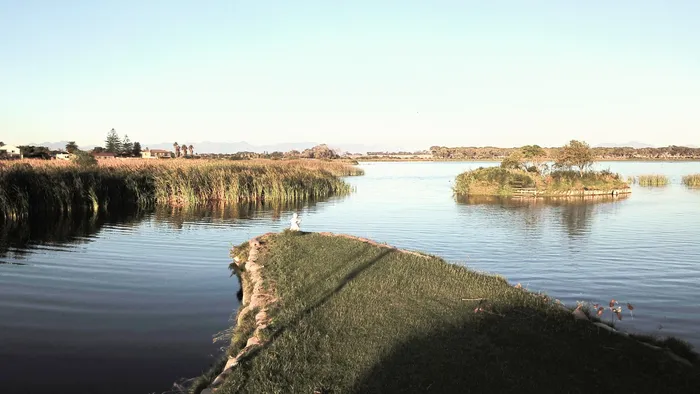Sewage spills threat to vlei

In 2015 Zeekoevlei was awarded Ramsar status, which means that the wetland is internationally recognised as a “wetland of importance” by the Ramsar Convention.
The vlei had to be closed twice in two months on August 28 and September 17.
It was reopened three weeks later when pollution levels were acceptable again, according to Sidney Jacobs, chairman of the Friends of Zeekoevlei and Rondevlei (FOZR).
However, the vlei was closed again and only partially reopened after the City of Cape Town deployed an excavator to clean up the Big Lotus, on Friday October 9.
“But everyone is cautioned to stay away from the Big Lotus mouth due to high readings,” said Mr Jacobs.
Mr Jacobs said after the second big contamination was discovered on September 17 events planned in the water bodies had to be moved urgently for health and safety reasons.
The vlei is treated with various methods, such as removal of solids, using acceptable enzymes, skimming and removal by excavator.
“The complete vlei is still closed and regular water tests are done across the water body to determine when it will be opened to the public to enjoy the environment safely,” said Mr Jacobs.
According to a City of Cape Town press release, a vandalised low-flow stormwater to sewer diversion in the Big Lotus River is the only obvious infrastructure failure which could have contributed to pollution in the vlei.
Low-flow diversions are installed in chronically polluted stormwater ways, normally in catchments where land invasions and illegal development are prevalent; as these normally have a very noticeable effect on water quality.
These low-flow diversion works function to channel polluted stormwater straight to the sewer infrastructure, where it will flow to the nearest waste water treatment works.
Mr Jacobs said pollution is an ongoing battle for all parties involved in protecting the environment and this task is complicated by various factors such as vandalism, urbanisation and informal housing. “And just people’s no-care attitude that still exists in some of the public’s actions.”
The City said in the case of land invasions, sometimes it is not legally possible for the City to provide services such as toilets, or at the very least - provision of services is delayed until budget becomes available to provide services on unlawfully occupied land.
This leads to pollution of storm drains, which flows into the natural water bodies around Cape Town. Low-flow diversion schemes are normally effective at minimising chronic pollution; however when water flows in the river increase above the capacity of the diversion chamber, pollution can still get past.
The City said the most likely explanation for pollution currently is therefore a combination of both the recent rains and the vandalised low-flow diversion. However, further testing is still under way to try and eliminate other source possibilities.
The vandalised low-flow diversion was repaired on September 24.
The City said tests conducted on Friday September 25, indicate significant sewage pollution in the northern portion of the vlei, most likely reflecting the lingering effects of the vandalised low-flow diversion, and as such, the Zeekoevlei Reserve will remain closed for now.
Meanwhile Mr Jacobs said the polluted air was discovered by Friends of Zeekoevlei and Rondevlei, vice chairman, Tom Schwerdtfeger, on September 17, on his regular cruises around the vlei.
“It was horrendous. The various treatments instituted by the City has made a huge difference but the vlei is still not open at the moment.”
Mr Jacobs said the health risks are serious.
“Boating. fishing, sailing, rowing and all other water sports have been ceased.
“Given the current Covid-19 pandemic and studies which have shown that the virus can be carried in sewage, the sewage spill presents serious health risks to those residents living along the Big Lotus River and those living on the shores of Zeekoevlei.”
Asked what the FOZR proposed the City should do to prevent a spill from happening in future, Mr Jacobs said they would like the City to pro actively maintain all waterways into the vleis.
“ Also make sure that the communication to the public is done sooner so that all parties are informed and we can have a collective strategy on how to tackle the issue.
“Zeekoevlei is an iconic example of what can be done with wetlands as it is a water body which is not only protected both locally and internationally, but it is used for recreation and education purposes, and is treasured by both residents and non-residents, who are actively involved in its protection. “
Mr Jacobs said in 2015 Zeekoevlei was awarded Ramsar status, which means that the wetland is internationally recognised as a “wetland of importance” by the Ramsar Convention and that the South African government has committed to protecting it in the interests of biodiversity.
Zeekoevlei is home to Cape clawless otters, a wide diversity of bird species including a pair African fish eagles, heron, cormorants, crested grebes, great white pelicans (near threatened) and greater flamingos, and amphibians such as the endangered western leopard toad, common platannas, and clicking stream frogs.
“We urge the City and all our communities to really think about their actions and the effect it will have on our environment. That bag of litter that gets flung out of a car window, that mattress or TV box that gets thrown over the back wall into a river. It ends up in the water body and eventually the ocean - and has a devastating effect on the natural world,” he said.